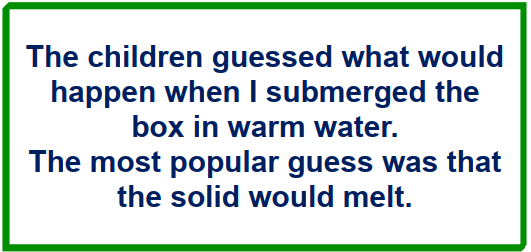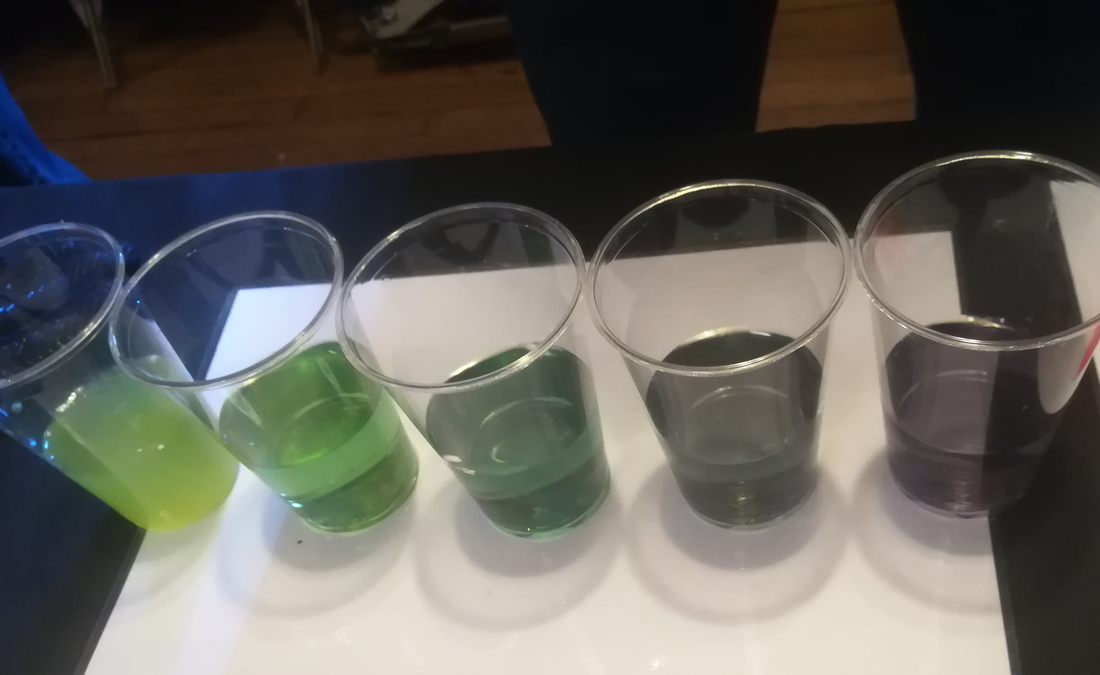Science outreach with new audiences
Science is for everyone, but not all the ECG outreach activities are appropriate for every audience: many require a good level of English, and an understanding of technical terms such as pH or acidity. Considering how to adapt activities to include more interested people led me to take three ECG outreach activities to a small class of pre-schoolers at Little Pioneers Nursery, Rose Hill, Oxford in October 2022.
|
The group of around 10 children were introduced to ocean acidification, making bee balls, and simple pH experiments.
The first experiment, ocean acidification, is a stunning visual demonstration where a universal indicator is added to slightly alkaline water, followed by dry ice. It is always popular, and children enjoy touching the “steam” coming off the top. An outline of this activity may be found in the July 2019 Bulletin, p. 22 (1). To make this safer for pre-school children, I confined the dry ice to a plastic box, sealed with tape, with holes smaller than the pellets pierced in it. |
After asking them what dry ice was, inviting them to touch the outside of the box and talk about what cold meant, the children guessed what would happen when I submerged the box in warm water – our ‘ocean’. The most popular guess was that the solid would melt. This led on to a discussion of melting and boiling (the term ‘sublimation’ did not arise!). Flammable Universal Indicator and corrosive sodium hydroxide (to make the ocean alkaline) were excluded, but we did add some coloured juice to the water, to safely explore use of all your senses (seeing no colour change, smelling/tasting the orange carried by the vapour, touching the vapour and water, and hearing the bubbling).
Whilst the environmental messages carried by this demonstration were clearly diluted, there remained plenty of opportunities for scientific engagement and honing observation skills.
Whilst the environmental messages carried by this demonstration were clearly diluted, there remained plenty of opportunities for scientific engagement and honing observation skills.
Oppositely, the bee balls activity (July 2022 Bulletin p. 14 (2)) maintained its environmental message, but lost some of its finer details: measuring amounts had to be neglected: we took the activity outside and used a large table where all the components could be laid out and mixed. Some children took roughly even amounts, whilst others were more relaxed; however, all were keen to ensure they had included the soil, clay, seeds and water that make useful wildflower seed balls. Pouring water carefully was a challenge, and led to problem-solving to correct some very soggy results. The children and staff enjoyed talking about outdoor activities, plants and insects.
|
I was very impressed with the deductive thinking shown during our simple pH tests (which I called marvellous medicines). In order to show the three-year-olds pH changes safely, I used butterfly pea tea instead of Universal Indicator. Each had a little in a transparent plastic pot, and I offered lemon juice, white vinegar, orange squash and bicarbonate of soda with a spoon. First we looked at and smelt the samples to guess what they were, then we tested them. The children looked at the colours they each made and added more things with the aim of making
their favourite colour. Green, blue, purple, pink and grey all arose. After one child mixed an acid and the bicarbonate of soda, the others keenly attempted to replicate this and paid good attention to detail. Some tried adding lots of the power either without acid or in excess, which helped us to show that both were needed to get more frothing |
You can watch all our activity videos and access How Tos and activity sheets at https://www.envchemgroup.com/resources.html



